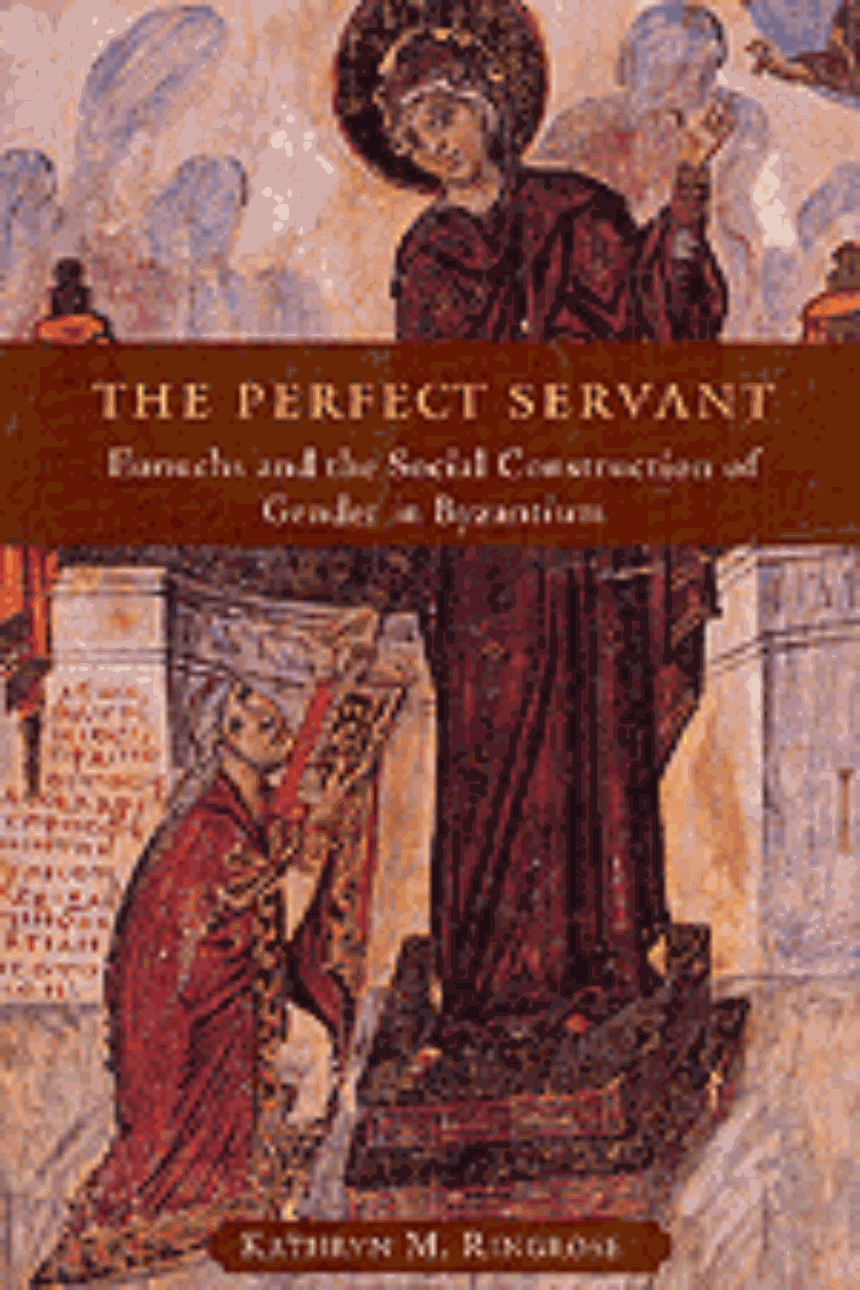The Perfect Servant
Eunuchs and the Social Construction of Gender in Byzantium
The Perfect Servant reevaluates the place of eunuchs in Byzantium. Kathryn Ringrose uses the modern concept of gender as a social construct to identify eunuchs as a distinct gender and to illustrate how gender was defined in the Byzantine world. At the same time she explores the changing role of the eunuch in Byzantium from 600 to 1100.
Accepted for generations as a legitimate and functional part of Byzantine civilization, eunuchs were prominent in both the imperial court and the church. They were distinctive in physical appearance, dress, and manner and were considered uniquely suited for important roles in Byzantine life. Transcending conventional notions of male and female, eunuchs lived outside of normal patterns of procreation and inheritance and were assigned a unique capacity for mediating across social and spiritual boundaries. This allowed them to perform tasks from which prominent men and women were constrained, making them, in essence, perfect servants.
Written with precision and meticulously researched, The Perfect Servant will immediately take its place as a major study on Byzantium and the history of gender.
Accepted for generations as a legitimate and functional part of Byzantine civilization, eunuchs were prominent in both the imperial court and the church. They were distinctive in physical appearance, dress, and manner and were considered uniquely suited for important roles in Byzantine life. Transcending conventional notions of male and female, eunuchs lived outside of normal patterns of procreation and inheritance and were assigned a unique capacity for mediating across social and spiritual boundaries. This allowed them to perform tasks from which prominent men and women were constrained, making them, in essence, perfect servants.
Written with precision and meticulously researched, The Perfect Servant will immediately take its place as a major study on Byzantium and the history of gender.
Reviews
Table of Contents
List of Illustrations
Spelling Conventions for Greek Names
Acknowledgments
Introduction
PART I GENDER AS SOCIAL CONSTRUCT
CHAPTER 1 The Language of Gender
CHAPTER 2 Byzantine Medical Lore and the Gendering of Eunuchs
CHAPTER 3 Gender Construction as Acculturation
CHAPTER 4 Making Sense of Tradition: Regendering Legendary Narratives
PART II BECOMING PROTAGONISTS
CHAPTER 5 Passing the Test of Sanctity: Eunuchs and the Ecclesiastical World of Byzantium
CHAPTER 6 Trangressing Gender Boundaries Eunuchs in Authority
CHAPTER 7 Transcending the Material World: Eunuchs and Angles
CHAPTER 8 Eunuchs at the Palace: Gendered Space and Confirmation of the Imperial Numen
CHAPTER 9 Social Reproduction and Integration
Conclusion Present and Past Perceptions of Gender
Spelling Conventions for Greek Names
Acknowledgments
Introduction
PART I GENDER AS SOCIAL CONSTRUCT
CHAPTER 1 The Language of Gender
CHAPTER 2 Byzantine Medical Lore and the Gendering of Eunuchs
CHAPTER 3 Gender Construction as Acculturation
CHAPTER 4 Making Sense of Tradition: Regendering Legendary Narratives
PART II BECOMING PROTAGONISTS
CHAPTER 5 Passing the Test of Sanctity: Eunuchs and the Ecclesiastical World of Byzantium
CHAPTER 6 Trangressing Gender Boundaries Eunuchs in Authority
CHAPTER 7 Transcending the Material World: Eunuchs and Angles
CHAPTER 8 Eunuchs at the Palace: Gendered Space and Confirmation of the Imperial Numen
CHAPTER 9 Social Reproduction and Integration
Conclusion Present and Past Perceptions of Gender
